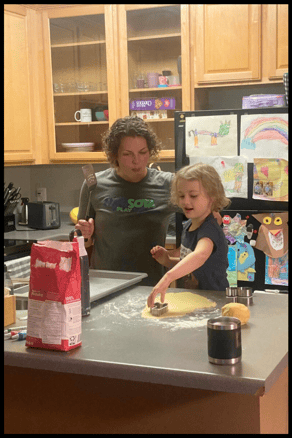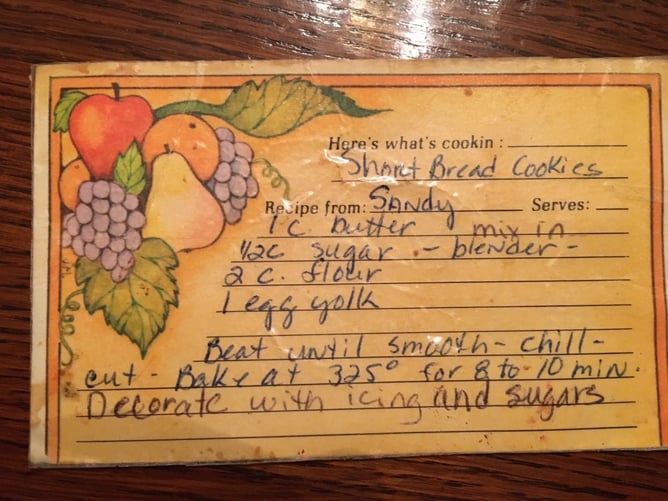Sweet Strategy: How a Cookie Recipe Mirrors Supply Chain Excellence
Hi blog readers, Emily here. I couldn’t help but share a story about good practices that can apply to life and work, inspired by this festive time of year and a holiday-cookie-baker-in-training. My daughter and I made holiday cookies over the long Thanksgiving weekend, and I had a sweet reminder of the risks of tribal knowledge.

Homemade-from-scratch holiday treats and cookies have been a pillar of the holiday experience in my family since my mother was a child and probably before that. The recipes have been handed down through generations. While the basics are captured on hand-written recipe cards, the real magic happens from what the baker learned through years of experience with flavors, textures, boil-overs, oven temperatures, and ingredient quality.
Generally, these nuanced instructions were not written on the recipe card but rather taught through the coaching process.
I probably don’t have to say it, but I will: When the Master Baker is no longer there, the unwritten magical steps and ingredients are forever lost, and with it, the compliments for “life-changing shortbread cookies.”
You can see on the depicted shortbread cookie recipe that it is fairly basic: Sugar, butter, flour, egg yolk.

What the recipe card doesn’t tell you is:
- The recipe is significantly better with salted butter.
- It works better when the butter is soft but not melted in the microwave.
- It’s critical to add vanilla and moreso, a tablespoon of Watkin’s vanilla per batch.
- It’s perfectly fine to mix with a spoon (hand mixer not required).
- To roll out the dough, you must sprinkle the counter and rolling pin with flour fairly regularly and re-chill the dough every 5 minutes.
- Or that you should remove the cookies from the oven while the dough is still white – if it starts to turn brown, the cookies will inevitably be burnt.
Much like a well-crafted cookie recipe, the success of our work in supply chain hinges on well-defined processes. Just as a cookie recipe requires precise measurements and steps for a consistently delicious outcome, our business processes need clarity and structure. Relying on one person's knowledge is like having a secret ingredient in a recipe — it might work well until that person is unavailable. By establishing clear, documented processes, we ensure that our work is rich, consistent, and delivers the exceptional outcomes that make us a reliable supplier and/or employer.
So, for the sake of your business and your 6-year-old burgeoning baker, get those “pro tips” out of your head and onto the recipe card.
Incidentally, this recipe does not include what I consider the best part: the frosting. Below, you can find the recipe, as it was taught to me (but with a few more specifics and learnings). Good luck!
Homemade Frosting:
Half Stick of Salted Butter
2 Cups Confectioners (powdered) sugar
½ tbsp Natural Vanilla
2 tbsp Milk
Melt the butter in a bowl until it is liquid. Add vanilla. Add sugar. Mix until the mixture is too dry/hard to keep mixing. Add milk. Mix again. Keep mixing and adding small (teaspoon) quantities of milk until you've reached the desired consistency. If the frosting becomes too thin, add sugar. Add ½ cup of cocoa powder for chocolate frosting and repeat the process to the desired consistency. Flavors such as almond extract, orange, or mint may also be added for enjoyment.
Waypost Advisors is an end-to-end supply chain and resourcing solution. We offer expertise in procurement, inventory, project management, planning, transportation & warehousing to fit the needs of your B2B manufacturing or distribution company. Our advisors can provide you with the resources and expertise to tackle your supply chain challenges while allowing you to still focus on running your business.
